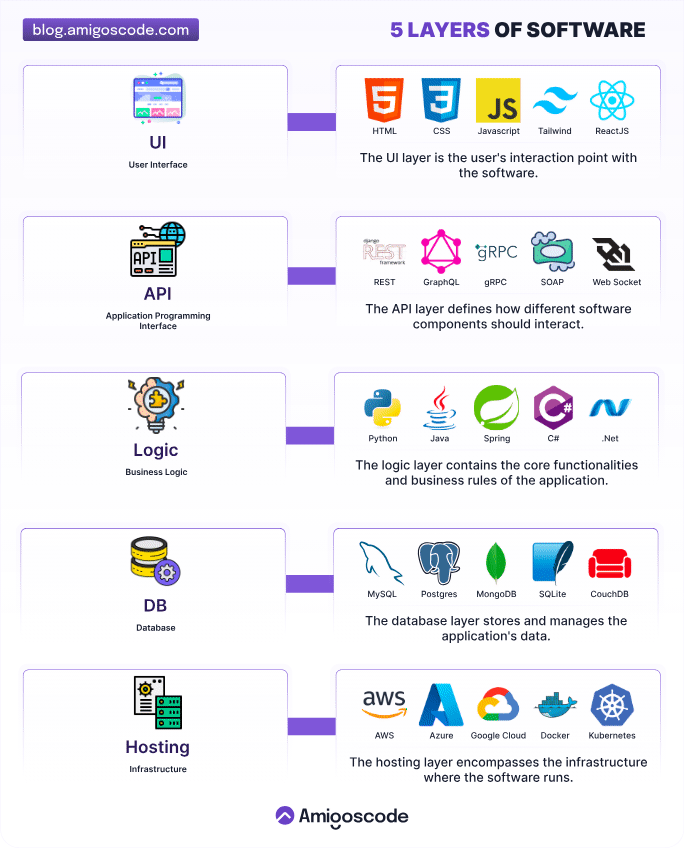The 5 Layers of Software Explained
Break down the full stack into five essential layers every developer should know
As software engineers, we often talk about “the stack” — but what does that really mean? Whether you're building a simple to-do app or scaling a full-blown enterprise system, your software is likely made up of these five layers of software.
Whether you're crafting a side project, building for scale, or just trying to understand what "full-stack" really means, every piece of software you interact with is made up of these five layers: UI, API, Logic, Database, and Hosting.
1. UI (User Interface)
This is the part your users actually see and touch — the front door to your application.
Think HTML for the structure, CSS for styling, JavaScript for interactivity, and frameworks like React and Tailwind to build modern, responsive UIs. The UI layer is all about user experience. If it’s clunky, slow, or confusing, the best backend in the world won’t save you.
👉 If your app feels slick and intuitive, you’ve probably nailed the UI layer.
2. API (Application Programming Interface)
The API layer acts as the middleman between your frontend and backend.
It defines how software components talk to each other. REST, GraphQL, gRPC, and even good old SOAP are all protocols you can use here. Sometimes you’ll also use WebSockets for real-time updates.
In essence, the API is the translator that helps your frontend say, “Hey, I need the user’s data,” and the backend understands and responds with it.
3. Logic (Business Logic Layer)
This is the brain of your app — where the real work happens.
Here’s where you define rules like "a user can’t buy something if they don’t have enough balance" or "admins can reset passwords." This layer is typically built using languages like Java, Python, C#, or frameworks like Spring Boot and .NET.
Good business logic makes your app reliable and secure. It’s also where bugs often hide, so test it well.
4. DB (Database Layer)
Your app needs a memory, and that’s the database layer.
This is where you store everything — user accounts, product info, transactions, etc. Whether you use relational databases like PostgreSQL and MySQL, or NoSQL options like MongoDB or CouchDB, the key is designing schemas that make data easy to access and update.
Also, don’t underestimate the value of indexing and backups. Databases are boring… until they’re broken.
5. Hosting (Infrastructure Layer)
Finally, your code has to run somewhere, and that’s what the hosting layer is for.
Cloud providers like AWS, Azure, and Google Cloud offer the servers and services to make your app globally accessible. You might use Docker to package your app, and Kubernetes to manage scaling and deployment.
This layer is all about reliability, scalability, and performance. If your app crashes when traffic spikes, it’s usually an issue here.
Question
Conclusion
These 5 layers — UI, API, Logic, DB, and Hosting — are more than just architecture jargon. They're the backbone of nearly every modern application. When you understand how they work together, you don’t just build apps. You build software that scales, performs, and delights users.
Whether you're a junior dev or a seasoned engineer, mastering each layer will help you level up as a software builder.
Follow our roadmaps to learn about how to build software using these layers.








adfaef
asdgfhkjl